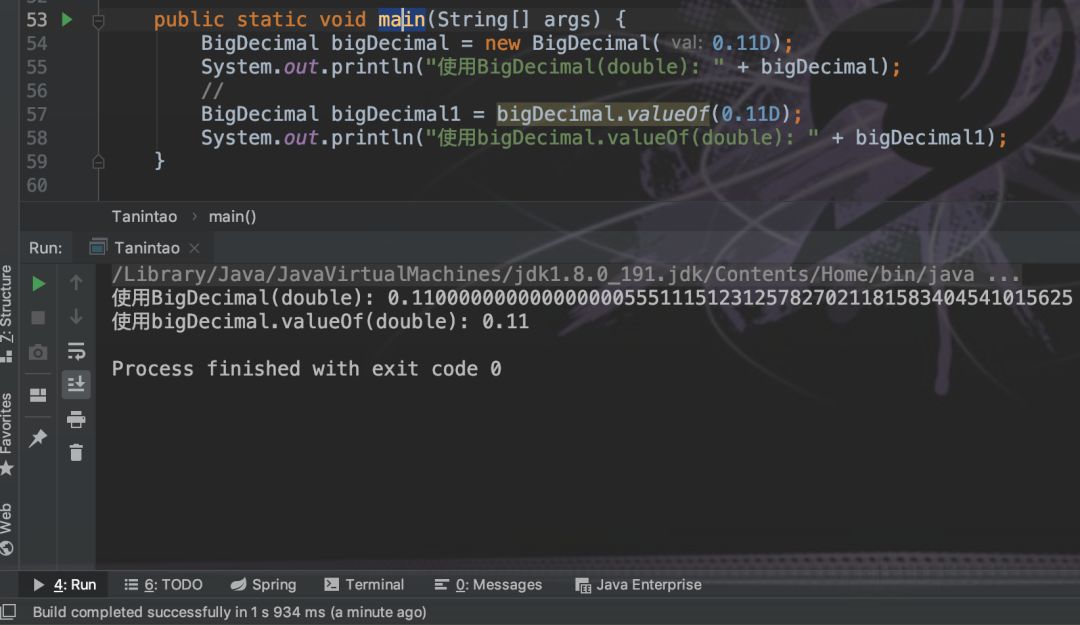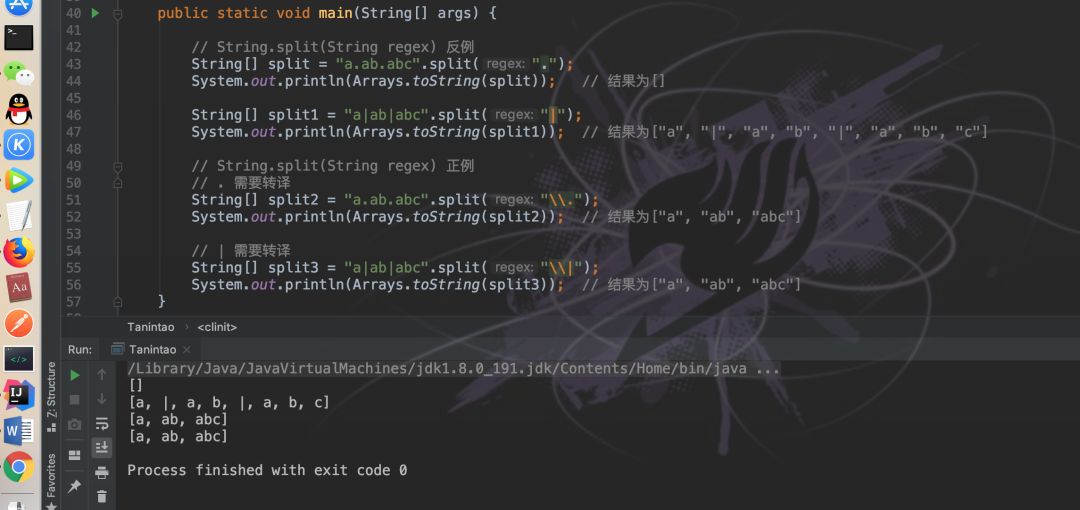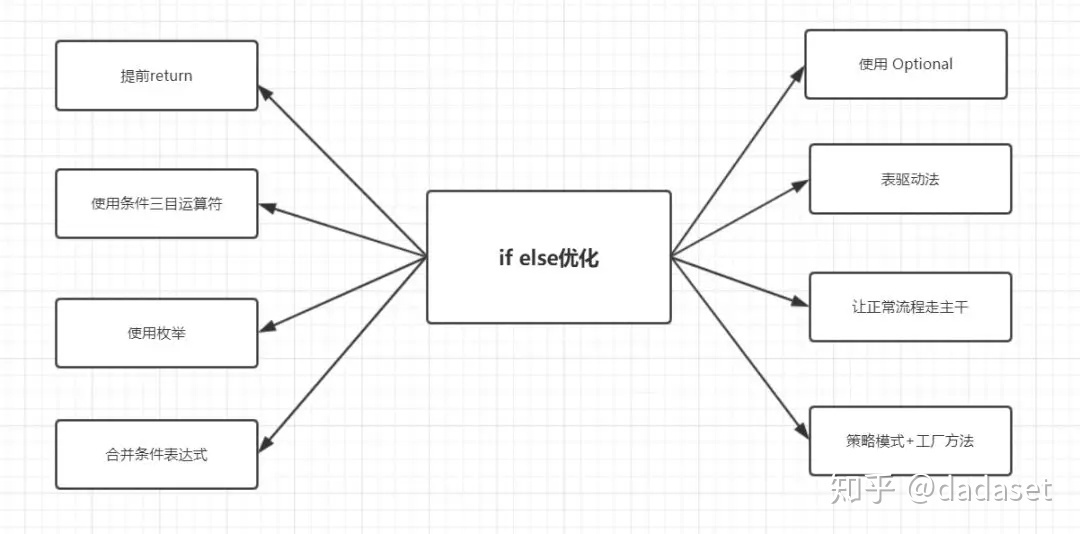Spring Boot 代码规范 参考:https://blog.csdn.net/u010517268/article/details/119635290
一、MyBatis 不要为了多个查询条件而写 1 = 1 当遇到多个查询条件,使用where 1=1 可以很方便的解决我们的问题,但是这样很可能会造成非常大的性能损失,因为添加了 “where 1=1 ”的过滤条件之后,数据库系统就无法使用索引等查询优化策略,数据库系统将会被迫对每行数据进行扫描(即全表扫描) 以比较此行是否满足过滤条件,当表中的数据量较大时查询速度会非常慢;此外,还会存在SQL 注入的风险。
反例:
<select id ="queryBookInfo" parameterType ="com.tjt.platform.entity.BookInfo" resultType ="java.lang.Integer" > select count(*) from t_rule_BookInfo t where 1=1 <if test ="title !=null and title !='' " > AND title = #{title} </if > <if test ="author !=null and author !='' " > AND author = #{author} </if > </select >
正例:
<select id ="queryBookInfo" parameterType ="com.tjt.platform.entity.BookInfo" resultType ="java.lang.Integer" > select count(*) from t_rule_BookInfo t <where > <if test ="title !=null and title !='' " > title = #{title} </if > <if test ="author !=null and author !='' " > AND author = #{author} </if > </where > </select >
UPDATE 操作也一样,可以用 标记代替 1=1。
二、 迭代entrySet() 获取Map 的key 和value 当循环中只需要获取Map 的主键key时,迭代keySet() 是正确的;但是,当需要主键key 和取值value 时,迭代entrySet() 才是更高效的做法,其比先迭代keySet() 后再去通过get 取值性能更佳。
反例:
HashMap<String, String> map = new HashMap <>(); for (String key : map.keySet()){ String value = map.get(key); }
正例:
HashMap<String, String> map = new HashMap <>(); for (Map.Entry<String,String> entry : map.entrySet()){ String key = entry.getKey(); String value = entry.getValue(); }
三、使用Collection.isEmpty() 检测空 使用Collection.size() 来检测是否为空在逻辑上没有问题,但是使用Collection.isEmpty() 使得代码更易读,并且可以获得更好的性能;除此之外,任何Collection.isEmpty() 实现的时间复杂度都是O(1) ,不需要多次循环遍历,但是某些通过Collection.size() 方法实现的时间复杂度可能是O(n)。O(1)纬度减少循环次数 例子
反例:
LinkedList<Object> collection = new LinkedList <>(); if (collection.size() == 0 ){ System.out.println("collection is empty." ); }
正例:
LinkedList<Object> collection = new LinkedList <>(); if (collection.isEmpty()){ System.out.println("collection is empty." ); } if (CollectionUtils.isEmpty(collection)){ System.out.println("collection is null." ); }
四、初始化集合时尽量指定其大小 尽量在初始化时指定集合的大小,能有效减少集合的扩容次数,因为集合每次扩容的时间复杂度很可能时O(n),耗费时间和性能。
反例:
int [] arr = new int []{1 ,2 ,3 ,4 };List<Integer> list = new ArrayList <>(); for (int i : arr){ list.add(i); }
正例:
int [] arr = new int []{1 ,2 ,3 ,4 };List<Integer> list = new ArrayList <>(arr.length); for (int i : arr){ list.add(i); }
五、使用StringBuilder 拼接字符串 一般的字符串拼接在编译期Java 会对其进行优化,但是在循环中字符串的拼接Java 编译期无法执行优化,所以需要使用StringBuilder 进行替换。
反例:
String str = "" ;for (int i = 0 ; i < 10 ; i++){ str += i; }
正例:
String str1 = "Love" ;String str2 = "Courage" ;String strConcat = str1 + str2; StringBuilder sb = new StringBuilder ();for (int i = 0 ; i < 10 ; i++){ sb.append(i); }
六、若需频繁调用Collection.contains 方法则使用Set 在Java 集合类库中,List的contains 方法普遍时间复杂度为O(n),若代码中需要频繁调用contains 方法查找数据则先将集合list 转换成HashSet 实现,将O(n) 的时间复杂度将为O(1)。
反例:
List<Object> list = new ArrayList <>(); for (int i = 0 ; i <= Integer.MAX_VALUE; i++){if (list.contains(i)) System.out.println("list contains " + i); }
正例:
List<Object> list = new ArrayList <>(); Set<Object> set = new HashSet <>(); for (int i = 0 ; i <= Integer.MAX_VALUE; i++){ if (set.contains(i)){ System.out.println("list contains " + i); } }
七、使用静态代码块实现赋值静态成员变量 对于集合类型的静态成员变量,应该使用静态代码块赋值,而不是使用集合实现来赋值。
反例:
private static Map<String, Integer> map = new HashMap <String, Integer>(){ { map.put("Leo" ,1 ); map.put("Family-loving" ,2 ); map.put("Cold on the out side passionate on the inside" ,3 ); } }; private static List<String> list = new ArrayList <>(){ { list.add("Sagittarius" ); list.add("Charming" ); list.add("Perfectionist" ); } };
正例:
private static Map<String, Integer> map = new HashMap <String, Integer>();static { map.put("Leo" ,1 ); map.put("Family-loving" ,2 ); map.put("Cold on the out side passionate on the inside" ,3 ); } private static List<String> list = new ArrayList <>();static { list.add("Sagittarius" ); list.add("Charming" ); list.add("Perfectionist" ); }
八、删除未使用的局部变量、方法参数、私有方法、字段和多余的括号。 九、工具类中屏蔽构造函数 工具类是一堆静态字段和函数的集合,其不应该被实例化;但是,Java 为每个没有明确定义构造函数的类添加了一个隐式公有构造函数,为了避免不必要的实例化,应该显式定义私有构造函数来屏蔽这个隐式公有构造函数。
反例:
public class PasswordUtils { private static final Logger LOG = LoggerFactory.getLogger(PasswordUtils.class); public static final String DEFAULT_CRYPT_ALGO = "PBEWithMD5AndDES" ; public static String encryptPassword (String aPassword) throws IOException { return new PasswordUtils (aPassword).encrypt(); }
正例:
public class PasswordUtils { private static final Logger LOG = LoggerFactory.getLogger(PasswordUtils.class); private PasswordUtils () {} public static final String DEFAULT_CRYPT_ALGO = "PBEWithMD5AndDES" ; public static String encryptPassword (String aPassword) throws IOException { return new PasswordUtils (aPassword).encrypt(); }
十、删除多余的异常捕获并抛出 用catch 语句捕获异常后,若什么也不进行处理,就只是让异常重新抛出,这跟不捕获异常的效果一样,可以删除这块代码或添加别的处理。
反例:
private static String fileReader (String fileName) throws IOException{ try (BufferedReader reader = new BufferedReader (new FileReader (fileName))) { String line; StringBuilder builder = new StringBuilder (); while ((line = reader.readLine()) != null ) { builder.append(line); } return builder.toString(); } catch (Exception e) { throw e; } }
正例:
private static String fileReader (String fileName) throws IOException{ try (BufferedReader reader = new BufferedReader (new FileReader (fileName))) { String line; StringBuilder builder = new StringBuilder (); while ((line = reader.readLine()) != null ) { builder.append(line); } return builder.toString(); } }
十一、字符串转化使用String.valueOf(value) 代替 “ “ + value 把其它对象或类型转化为字符串时,使用String.valueOf(value) 比 “”+value 的效率更高。
反例:
int num = 520 ;String strLove = "" + num;
正例:
int num = 520 ;String strLove = String.valueOf(num);
十二、避免使用BigDecimal(double) BigDecimal(double) 存在精度损失风险,在精确计算或值比较的场景中可能会导致业务逻辑异常。
反例:
BigDecimal bigDecimal = new BigDecimal (0.11D );
正例:
BigDecimal bigDecimal1 = bigDecimal.valueOf(0.11D );
图1. 失去精度
十三、返回空数组和集合而非 null 若程序运行返回null,需要调用方强制检测null,否则就会抛出空指针异常;返回空数组或空集合,有效地避免了调用方因为未检测null 而抛出空指针异常的情况,还可以删除调用方检测null 的语句使代码更简洁。
反例:
public static Result[] getResults() { return null ; } public static List<Result> getResultList () { return null ; } public static Map<String, Result> getResultMap () { return null ; }
正例:
public static Result[] getResults() { return new Result [0 ]; } public static List<Result> getResultList () { return Collections.emptyList(); } public static Map<String, Result> getResultMap () { return Collections.emptyMap(); }
十四、优先使用常量或确定值调用equals 方法 对象的equals 方法容易抛空指针异常,应使用常量或确定有值的对象来调用equals 方法。
反例:
private static boolean fileReader (String fileName) throws IOException{ return fileName.equals("Charming" ); }
正例:
private static boolean fileReader (String fileName) throws IOException{ return "Charming" .equals(fileName); return Objects.equals("Charming" ,fileName); }
十五、枚举的属性字段必须是私有且不可变 枚举通常被当做常量使用,如果枚举中存在公共属性字段或设置字段方法,那么这些枚举常量的属性很容易被修改;理想情况下,枚举中的属性字段是私有的,并在私有构造函数中赋值,没有对应的Setter 方法,最好加上final 修饰符。
反例:
public enum SwitchStatus { DISABLED(0 , "禁用" ), ENABLED(1 , "启用" ); public int value; private String description; private SwitchStatus (int value, String description) { this .value = value; this .description = description; } public String getDescription () { return description; } public void setDescription (String description) { this .description = description; } }
正例:
public enum SwitchStatus { DISABLED(0 , "禁用" ), ENABLED(1 , "启用" ); private final int value; private final String description; private SwitchStatus (int value, String description) { this .value = value; this .description = description; } public int getValue () { return value; } public String getDescription () { return description; } }
十六、String.split(String regex)部分关键字需要转译 使用字符串String 的plit 方法时,传入的分隔字符串是正则表达式,则部分关键字(比如 .
反例:
String[] split = "a.ab.abc" .split("." ); System.out.println(Arrays.toString(split)); String[] split1 = "a|ab|abc" .split("|" ); System.out.println(Arrays.toString(split1));
正例:
String[] split2 = "a.ab.abc" .split("\\." ); System.out.println(Arrays.toString(split2)); String[] split3 = "a|ab|abc" .split("\\|" ); System.out.println(Arrays.toString(split3));
图2. String.split(String regex) 正反例
彻底消灭if-else
优化方案 1:提前 return,去除不必要的 else 优化前:
if (condition){ }else { return ; }
优化后:
if (!condition){ return ; }
优化方案 2:使用条件三目运算符 优化前:
int price ;if (condition){ price = 80 ; }else { price = 100 ; }
优化后:
int price = condition?80 :100 ;
优化方案 3:使用枚举 优化前:
String OrderStatusDes; if (orderStatus==0 ){ OrderStatusDes ="订单未支付" ; }else if (OrderStatus==1 ){ OrderStatusDes ="订单已支付" ; }else if (OrderStatus==2 ){ OrderStatusDes ="已发货" ; } ...
优化后:(先定义一个枚举)
public enum OrderStatusEnum { UN_PAID(0 ,"订单未支付" ),PAIDED(1 ,"订单已支付" ),SENDED(2 ,"已发货" ),; private int index; private String desc; public int getIndex () { return index; } public String getDesc () { return desc; } OrderStatusEnum(int index, String desc){ this .index = index; this .desc =desc; } OrderStatusEnum of (int orderStatus) { for (OrderStatusEnum temp : OrderStatusEnum.values()) { if (temp.getIndex() == orderStatus) { return temp; } } return null ; } }
有了枚举之后,以上 if-else 逻辑分支,可以优化为一行代码:
String OrderStatusDes = OrderStatusEnum.0f (orderStatus).getDesc();
优化方案 4:合并条件表达式 如果有一系列条件返回一样的结果,可以将它们合并为一个条件表达式,让逻辑更加清晰。
优化前:
double getVipDiscount () { if (age<18 ){ return 0.8 ; } if ("深圳" .equals(city)){ return 0.8 ; } if (isStudent){ return 0.8 ; } }
优化后:
double getVipDiscount () { if (age<18 || "深圳" .equals(city)||isStudent){ return 0.8 ; } }
优化方案 5:使用 Optional 有时候 if-else 比较多,是因为非空判断导致的,这时候你可以使用 java8 的 Optional 进行优化。
优化前:
String str = "jay@huaxiao" ;if (str != null ) { System.out.println(str); } else { System.out.println("Null" ); }
优化后:
Optional<String> strOptional = Optional.of("jay@huaxiao" ); strOptional.ifPresentOrElse(System.out::println, ()
优化方案 6:表驱动法 表驱动法,又称之为表驱动、表驱动方法。表驱动方法是一种使你可以在表中查找信息,而不必用很多的逻辑语句(if 或 case)来把它们找出来的方法。
以下的 demo,把 map 抽象成表,在 map 中查找信息,而省去不必要的逻辑语句。
优化前:
if (param.equals(value1)) { doAction1(someParams); } else if (param.equals(value2)) { doAction2(someParams); } else if (param.equals(value3)) { doAction3(someParams); }
优化后:
Map<?, Function<?> action> actionMappings = new HashMap <>(); actionMappings.put(value1, (someParams) -> { doAction1(someParams)}); actionMappings.put(value2, (someParams) -> { doAction2(someParams)}); actionMappings.put(value3, (someParams) -> { doAction3(someParams)}); actionMappings.get(param).apply(someParams);
优化方案 7:优化逻辑结构,让正常流程走主干 优化前:
public double getAdjustedCapital () { if (_capital <= 0.0 ){ return 0.0 ; } if (_intRate > 0 && _duration >0 ){ return (_income / _duration) *ADJ_FACTOR; } return 0.0 ; }
优化后:
public double getAdjustedCapital () { if (_capital <= 0.0 ){ return 0.0 ; } if (_intRate <= 0 || _duration <= 0 ){ return 0.0 ; } return (_income / _duration) *ADJ_FACTOR; }
将条件反转使异常情况先退出,让正常流程维持在主干流程,可以让代码结构更加清晰。
优化方案 8:策略模式+工厂方法消除 if else 假设需求为,根据不同勋章类型,处理相对应的勋章服务,优化前有以下代码:
String medalType = "guest" ;if ("guest" .equals(medalType)) { System.out.println("嘉宾勋章" ); } else if ("vip" .equals(medalType)) { System.out.println("会员勋章" ); } else if ("guard" .equals(medalType)) { System.out.println("展示守护勋章" ); } ...
首先,我们把每个条件逻辑代码块,抽象成一个公共的接口,可以得到以下代码:
public interface IMedalService { void showMedal () ; }
我们根据每个逻辑条件,定义相对应的策略实现类,可得以下代码:
public class GuardMedalServiceImpl implements IMedalService { @Override public void showMedal () { System.out.println("展示守护勋章" ); } } public class GuestMedalServiceImpl implements IMedalService { @Override public void showMedal () { System.out.println("嘉宾勋章" ); } } public class VipMedalServiceImpl implements IMedalService { @Override public void showMedal () { System.out.println("会员勋章" ); } }
接下来,我们再定义策略工厂类,用来管理这些勋章实现策略类,如下:
public class MedalServicesFactory { private static final Map<String, IMedalService> map = new HashMap <>(); static { map.put("guard" , new GuardMedalServiceImpl ()); map.put("vip" , new VipMedalServiceImpl ()); map.put("guest" , new GuestMedalServiceImpl ()); } public static IMedalService getMedalService (String medalType) { return map.get(medalType); } }
使用了策略+工厂模式之后,代码变得简洁多了,如下:
public class Test { public static void main (String[] args) { String medalType = "guest" ; IMedalService medalService = MedalServicesFactory.getMedalService(medalType); medalService.showMedal(); } }


